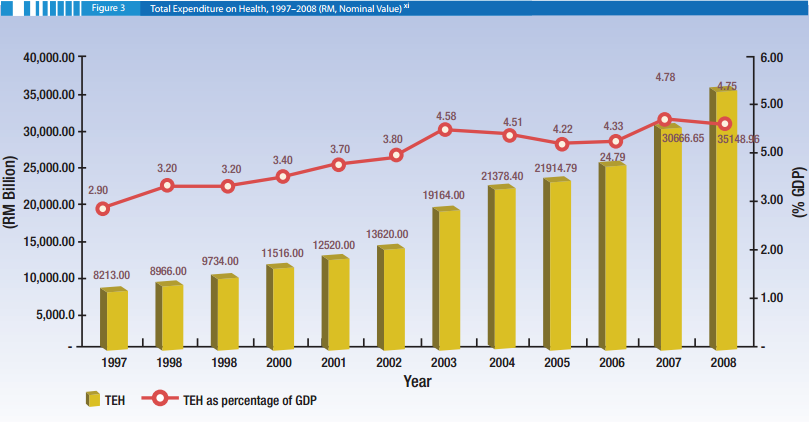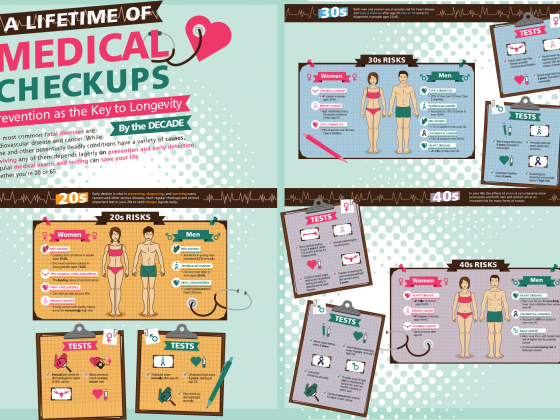by | Mohd Afzanizam Mohd Badrin | afzanizam@might.org.my
Discussions on the healthcare services in most developing countries underlined some issues and challenges with regards to:
• rising income leads to demand for a better quality of life via quality-oriented healthcare services,
• increased supply of healthcare services to cater for the increased number of aging population and changed in lifestyles,
• prevention and control of non-communicable and chronic diseases caused by modern lifestyle,
• demand for increased accessibility of care outside hospitals, moving health services into the patients’own homes; and
• the need for services efficiency, personalisation and quality healthcare, and the constrain of limited financial resources
Home service is the fastest growing trend in healthcare. Cost plays a major role in promoting this trend. Limited resources and increasing healthcare costs have led to proposals to expand home care services. More individuals are self-managing their health and preference for healthcare at home rather than in public or private hospitals increases.
Modern lifestyle has made knowledge and skills in information and communication technology (ICT) essential. The rapid development of ICT offers huge possibilities for the future, particularly in the healthcare sector. Technological developments create opportunities for people to get medical consultations and advices from the comfort of their homes. At the Forsyth Medical Center in Winston-Salem, North Carolina, nurses can monitor lives of some diabetes patients even when they’re not at the clinic using an app called Ginger.io. These modern technologies are utilised at hospitals in most developed countries. IBM stated that the combination of residential care and home healthcare contributed $45 billion to the industry and is projected to continuously grow i.
In Malaysia, the cost and quality of healthcare has improved. However, the adoption of technology for healthcare at home, which is relatively new, is still at an infant stage. The development for the adoption of home healthcare technology has been slow and unplanned. Although there are initiatives and experiments in this area by public and private initiatives, they are hindered by several factors such as lack of an integrated home care system and the unavailability of suitably trained technicians.
Home healthcare, in its traditional form, has existed in Malaysia for several years. Malaysians from all walks of life get home visit services to care for women after giving birth and new born babies. Apart from post natal treatment, mothers are given medical advices and lessons on childcare by government midwives and nurses that visit their homes.
Home medical care in Malaysia has evolved. Not only new mothers and babies, but the elderlies and general patients are also reaping the benefit of home visits by government medical staffs. And, as home care technologies improve, the benefits will spread to all – not only modern mommies, the elderlies and general patients, but informal caregivers, medical professionals and medical organisations too. Receiving healthcare at home soon will become common.
Current healthcare environment is characterized by three major problems: accessibility, quality, and cost
Trend 1: Home as a Centre for Future Healthcare
Naomi Fired, vice president of Kaiser Permanente in 2009, forecasted that by 2015 the home will be the hub of healthcare. His optimistic view for the demand of home healthcare at home was based on and driven by the opinion of Dr Steven Landers who listed five primary forces that will push for home medical care. The five primary forces are aging population, rapid development of ICT, increase medical cost, privacy and personalisation, and patients’ convenience.
The increase of aging population increases the need for specialised medical attention. Studies have shown that an elderly person faces a higher probability to suffer chronic diseases such as cardiovascular disease (CVD) iii. CVD patients often need constant care and attention, thus the need for home medical care.
The rapid development of ICT accelerates the adoption of home tele-health care technology iv. Tele-health care focuses largely on remote patient monitoring. In this capacity, Tele-health care allows for improved quality of life for many patients suffering from chronic conditions.
Apart from meeting the driving goal in healthcare – improving the quality and accessibility to the medical treatment, Tele-health is cost effective.
The cost of healthcare is rising faster than the levels of available public funding, thus increasing the need for home healthcare. A study done by Economist Intelligence Unit identified the main drivers of rising healthcare costs in Europe as v:
• Aging populations and the related rise in chronic diseases.
• Costly technological advances.
• Patients’ demands, driven by the increased knowledge of options and less healthy lifestyles.
• Legacy priorities and financing structures that is ill-suited to today’s requirements.
Limited capacity of the health facility and cost constrained drives patients to consider home healthcare. Medical care at home provides considerable advantages to consumers or patients, such as:
• Accessibility and cost benefits. Population growth will change the health delivery system. Today, almost everyone owned mobile devices that can be integrated with the healthcare monitoring systems using wireless mobile communication network technology that provides greater accessibility, freedom, portability and convenience, especially to elders and patients at homes. The long-term cost of medical and healthcare services can thus be reduced and, eventually, the overall quality of healthcare services can be improved.
• Personalisation. Healthcare at home provides convenience and privacy to the patients. This is part of consumers’ preferences that demands for personalised services.
• Cost concerns. Higher demand for healthcare services will result in increase of costs of medical and healthcare. The situation is also worsened by the absence of competitive market. Most patients are shifting towards home healthcare as a measure to minimise cost.
Current healthcare environment is characterized by three major problems: accessibility, quality, and cost. All three are interrelated to one another. They influence the patient to decide where and when to get treatment – public medical facilities, private hospitals and clinics, or at home. Private and public healthcare providers seek to integrate healthcare services in order to improve quality and ensure affordability to all, whilst patients will look for convenient health care services that offer cost benefits to them.
Trend 2: Acute Care at Home
Two defining features that encourage home healthcare market are the predominance of ‘forprofit facilities’ and the perception of low quality care in many public facilities vi. Home hospitalisation services (HHS), already being used in many developed countries such as Italy, Australia, Canada, England and Israel, become the alternative. The shift towards a hospital-at-home model is meant for specific patients and medical conditions that need to be supported by clinical research. HHS basically allows for diagnostic and therapeutic interventions, commonly carried out at the hospital, to be performed at home. It has been projected that, in the next twenty years, 46% of Americans who survive to the age of 65 will use home healthcare at some point in their lives vii.
Conditions treated by a commercial venture in US called Clinically Home includes pneumonia, chronic obstructive pulmonary disease (COPD), heart failure, asthma, cellulitis, urosepsis and deep vein thrombosis viii. In Italy, HHS has been operating in Turin since 1985. It started with a stroke care project. Stroke is consuming 5% of all hospital resources ix.
However, there are obstacles faced in HHS programs. Currently, insurers are reluctant to provide reimbursement and not many physicians are keen to invest time and resources in this program.
Trend 3: Home as Centre of Wellness and Prevention
The constant improvement of healthcare extends life expectancy. On the other hand, infectious diseases and lifestyle diseases such as diabetes may mean a downturn in life expectancy. As the old adage goes: Prevention is better than cure, the prevention of health problems through healthy lifestyles is more effective than the increasing use of medicines. Exercise is the best prescription and, for many busy individuals, the option is to exercise at home.

The two main factors that would make home the centre for wellness and prevention of illnesses in the next decade are:
• Prevention vs. cost for healthcare. In most OECD countries, the share of gross domestic product devoted to healthcare expenditures has grown. Rising costs in healthcare will be inevitable. Per capita, the United States’ expenditure for healthcare is about three times the amount allocated by Finland. Total health expenditure as percentage of GDP in Malaysia is increasing – more than three folds. Disease prevention is definitely important: 40% of deaths in the United States are considered preventable. The application of preventive practices across the lifespan will minimize risk factors and improve survival as well as quality of life. Prevention services can be in various settings, including the homex.
• Real-time health monitoring. Prevention of disease involves testing and screening. It is essential to prevent, avoid or predict future illness. This requires the implementation of health-related ICT that provides more cost-effective healthcare. Research Specialist Rob Kaminsky suggests that ‘the Advanced Remote Patient Monitoring Systems allows physicians the ability to monitor and record everything from basic vital signs to cardiovascular and respiratory issues. This keeps patients out of the hospitals and in their homes where they are more comfortable unless actual treatment is needed xiv. However, adoption of technology by older adults is still limited. Health-related ICT for the elderly is suggested to be kept simple and able to demonstrate significant benefits to them xv. Familiarisation of the technology via training and courses will increase the level of awareness and encourage the adoption of health-related ICT.

Trend 4: Special Care for Elderly at Home
Older persons represent the largest and most active population of healthcare and medication consumers. Most elderly people who need special care are living at home, sometimes alone and unassisted. The influencing factors for ‘senior living’ are:
• Accessibility to the quality healthcare: As the number of ‘empty-nest’ elderly rises in the country, ensuring accessibility to the quality healthcare is a public health concern. The modern social community called an ‘empty-nest’ elderly is usually categorised as a group who had higher income but less social support. This segment of the population has a higher prevalence of chronic diseases. They also had higher home healthcare needs and were willing to pay for home healthcare.
• Increasing health literacy of the population results in an exponential increase in public expectation for health care in most countries. In countries where healthcare budget is unable to keep up with the demand, healthcare services suffer. Facilities and services at public medical centres do not satisfy the population and services and treatment at private hospitals and clinics are expensive. As a result, more and more people are resorting to home healthcare.
• The availability of and access to primary healthcare. Primary care is the typical way patients access the healthcare system. Studies show that the potential access to primary care is greatly dependent on spatial and aspatial dimensions of access xvi. The expanding linkages between the healthcare institution and senior living providers such home care, clinic and rehab providers provide a network of care services that begins in the home while also offers residential facilities when needed xvii.
Recent reforms have demanded a competitive market-driven approach to healthcare. Cost, time and technology readiness will remain as the major concern to consumers. Various strategies has been outlined to increase health services to the public, including transfer of patients directly to home, early discharge, the increase of same day surgery, transfer of elderly patients to low-intensity care settings and a variety of home-care initiatives such as Home Hospital or Hospital in the Home.
Changes in consumers’ behaviour and preference towards healthcare services that can provide personalisation, convenience, effective option, costs concern, accessibility and literacy improvement in health-related ICT will further boost the demand for home healthcare as well as alter the delivery system for healthcare services. These changes have inspired some delivery system innovations. Medical clinics are appearing in retail stores. Physician house calls are making a comeback. These innovative access approaches offer important benefits if they are well executed and the systems fully integrated.









